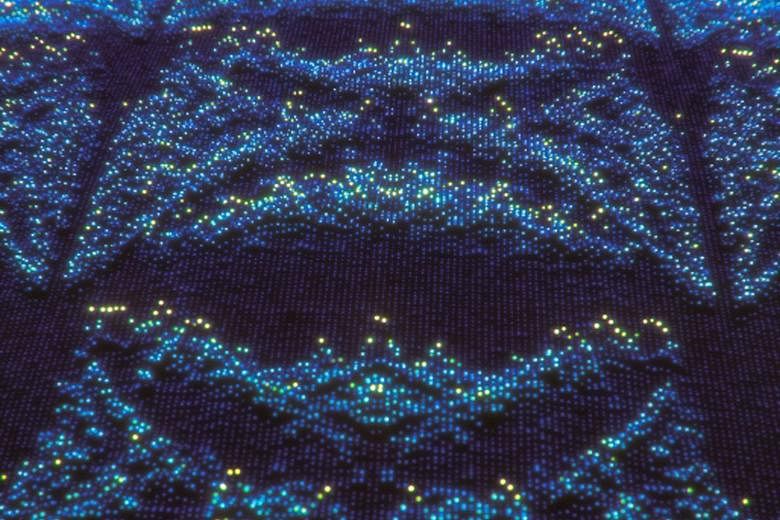These "butterflies" are the result of a "quantum simulation" by researchers at the Centre for Quantum Technologies (CQT) at the National University of Singapore, and Google, which is trying to build quantum computers. Such computers will use features of quantum physics, apparent in the behaviour of single particles or tiny circuits, to solve problems faster than today's machines. The team used one of Google's quantum chips to simulate how materials behave in magnetic fields. It mapped how electron energy levels in a material split and shifted as an applied magnetic field gets stronger. A single, measured "butterfly" is multiplied here for artistic effect. The colour-coding of the dots comes from experimental data and shows the location of the energy levels. Energy increases in the forward direction and magnetic field increases along the horizontal axis. "Our method is like hitting a bell. By listening to the tune long enough, one can resolve the hidden harmonics," says CQT principal investigator and Technical University of Crete Associate Professor Dimitris Angelakis, a co-author of the paper published in Science this month.
Beautiful Science

Join ST's WhatsApp Channel and get the latest news and must-reads.
A version of this article appeared in the print edition of The Straits Times on December 08, 2017, with the headline Beautiful Science. Subscribe
